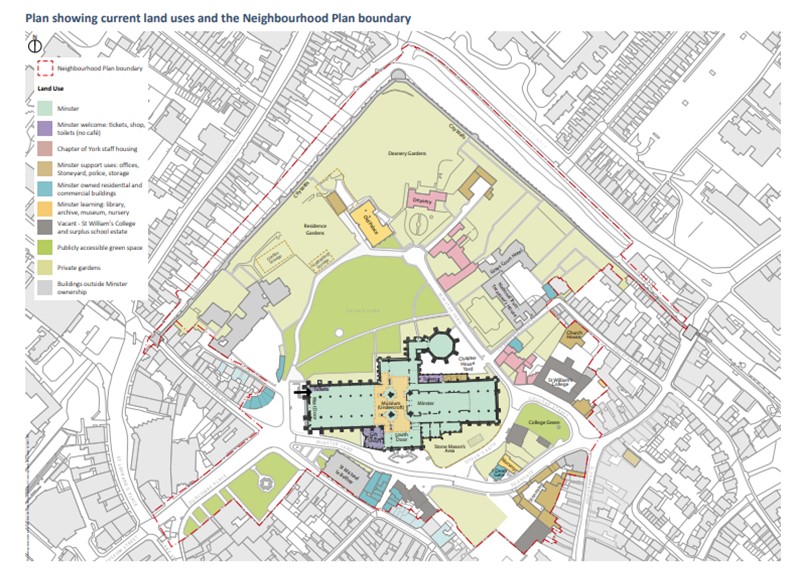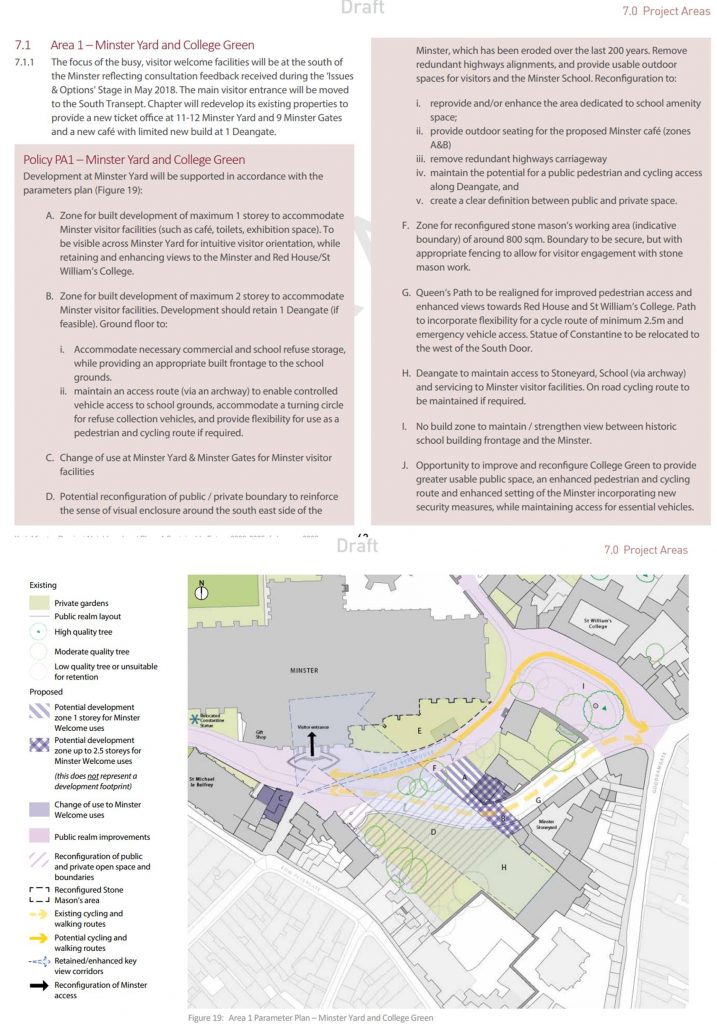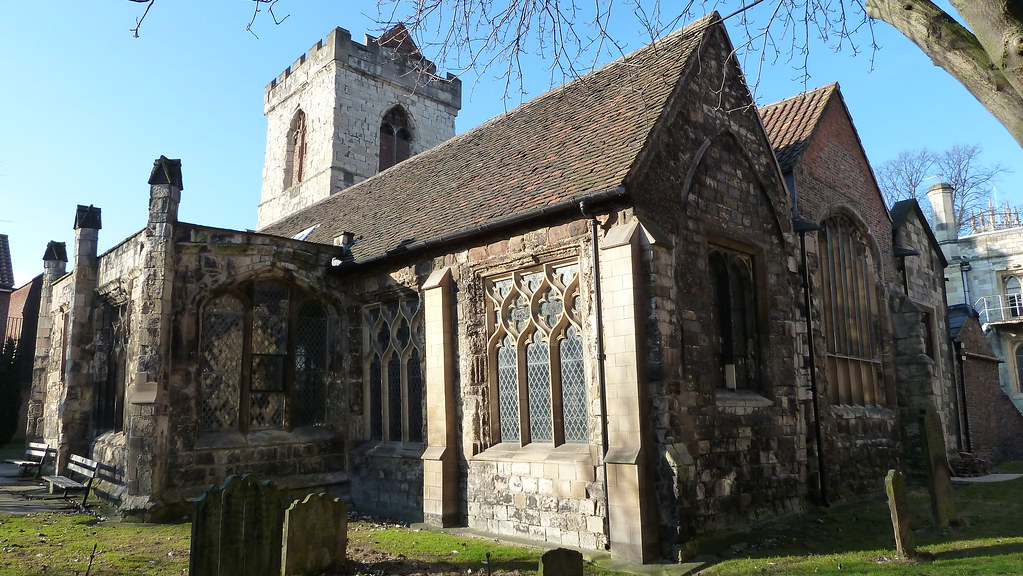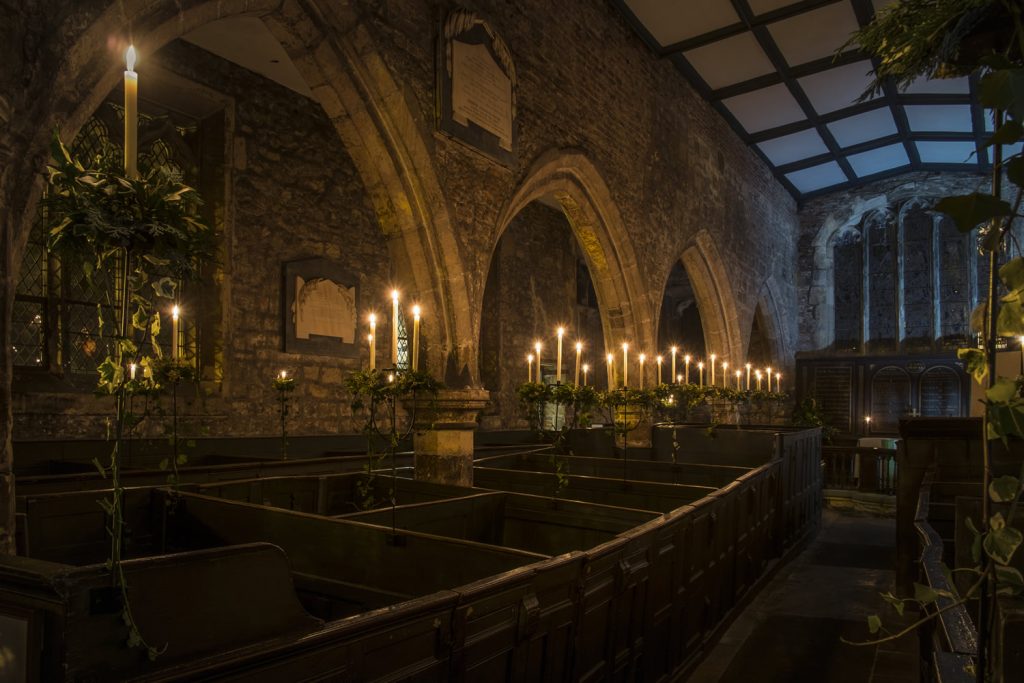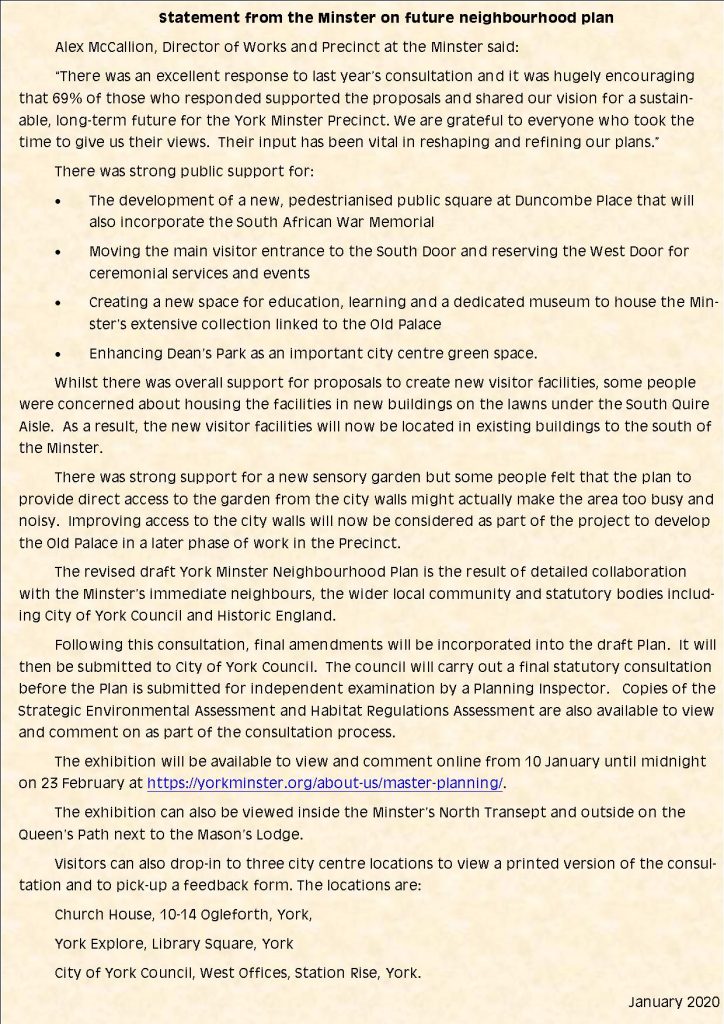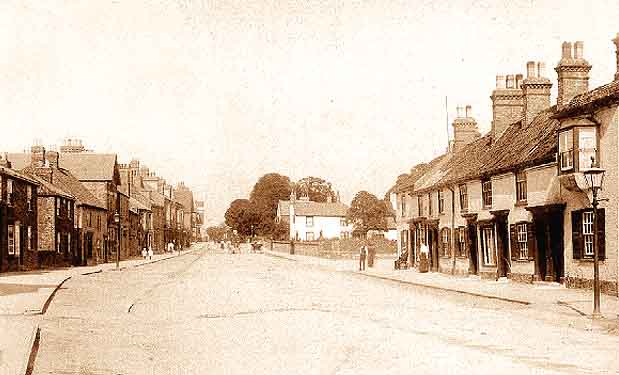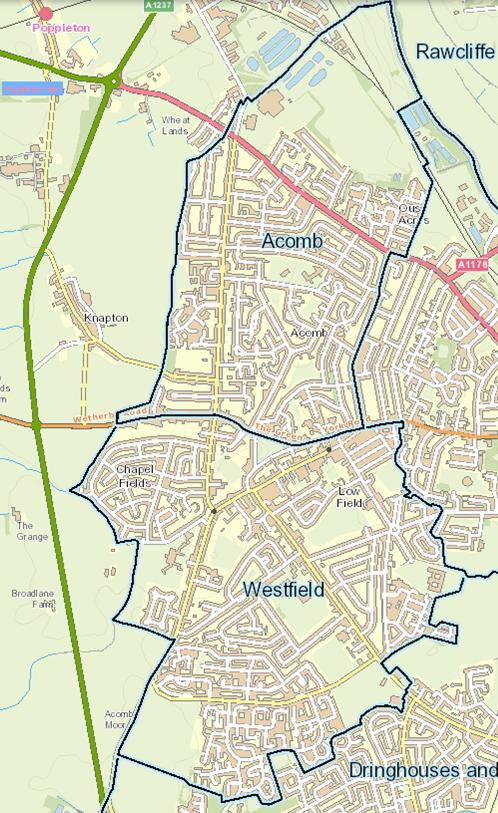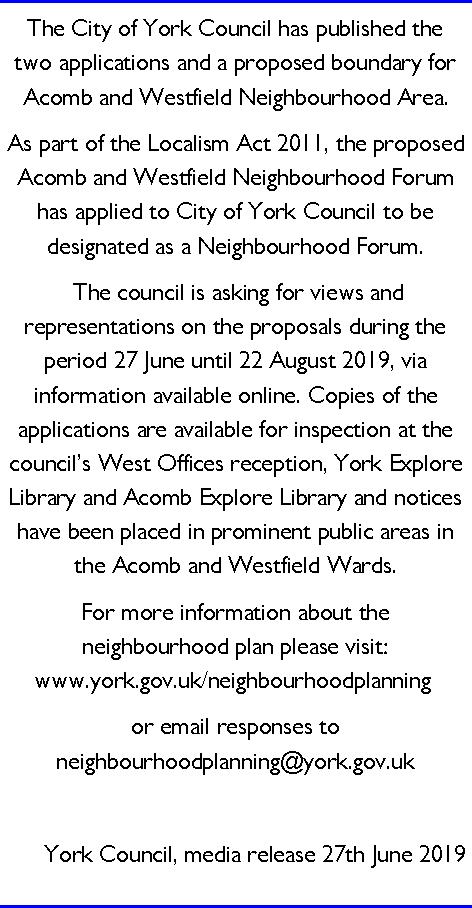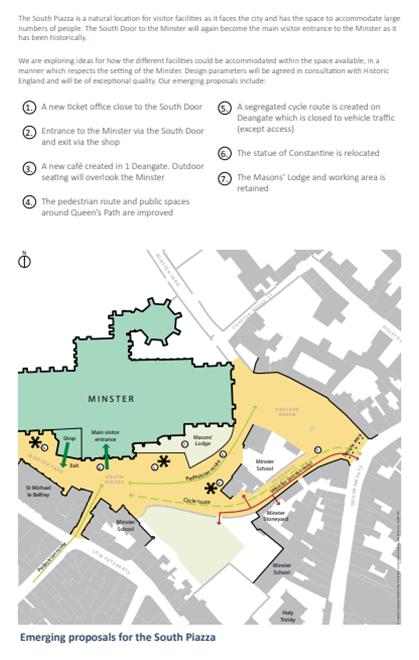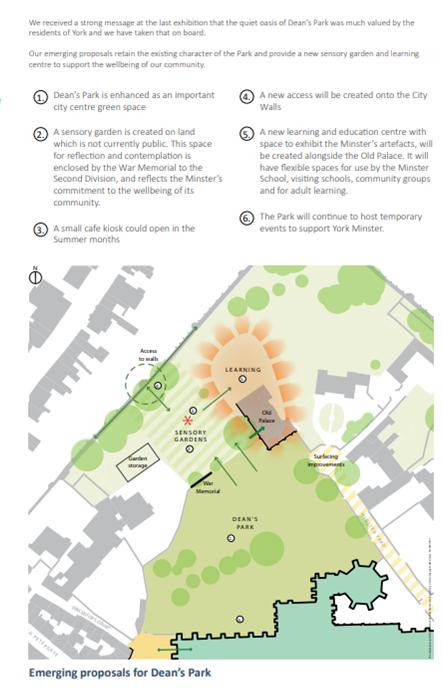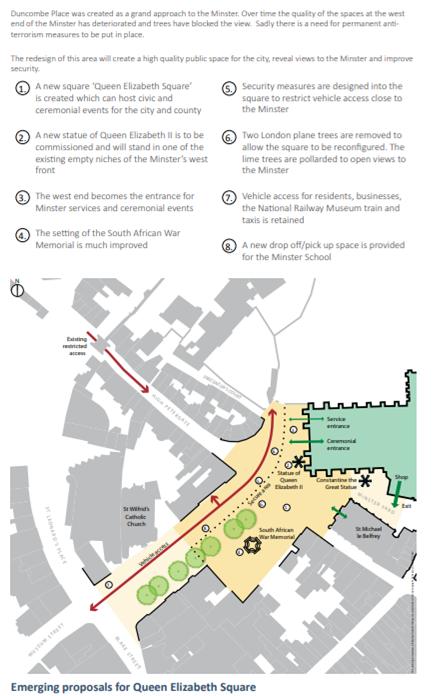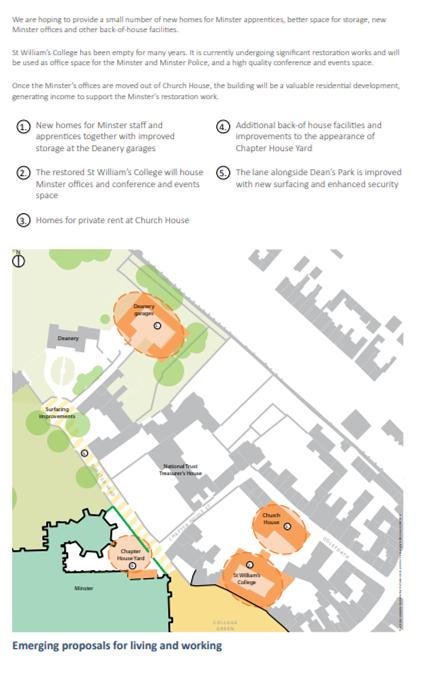York Minster is inviting members of the public to comment on design proposals for a new refectory and public open space on the site of the former Minster School.
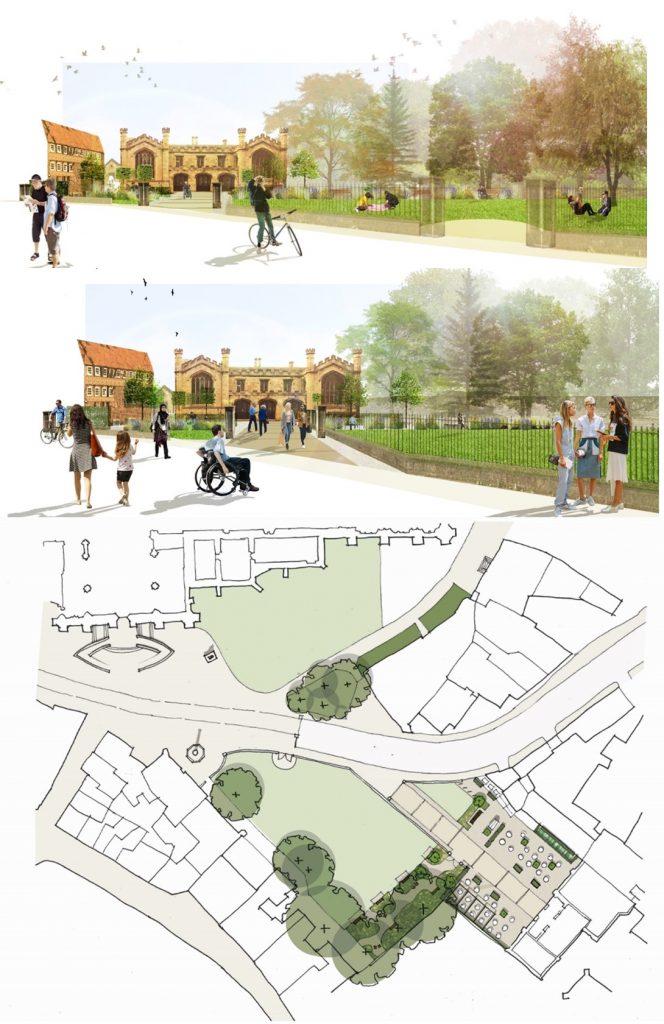
Sustainability, biodiversity and well-being are at heart of the proposals. The plans include a sympathetic renovation of the Grade II listed building at number 2 Deangate to create the York Minster Refectory. The conversion will see the full restoration of the building, including cleaning and repairs to the stonework to reveal previously hidden architectural features. The proposals include important new elements such as the creation of disabled access throughout the building and the installation of solar panels – the first anywhere in the Precinct. Once the permissions for the restoration and conversion of the building have been secured, the Minster will look to partner with a commercial operator to run the refectory on a rental basis.
The hard landscaping will be completely remodelled to make the area accessible and inclusive for the widest possible range of users. The design will link the refectory and the public space, both physically and visually, to the glorious views of the Minster’s South Transept and Quire.
Historic photographs of the front of the school, reveal evidence of extensive planting along the side of the Minster’s Stoneyard and this has been influential in the emerging proposals for the new public space. It will be specifically planned and designed to increase biodiversity in the heart of the city. Plants will be selected for their sensory and healing properties and to provide food for pollinators and habitats for wildlife.
The project is the first to emerge from the York Minster Neighbourhood Plan (YMNP), the community-led planning document which considered how the Minster Precinct will need to evolve to meet the changing needs of its community and visitors up to 2035.
The process of developing a masterplan for the future care of York Minster and its Precinct began in May 2018. Three subsequent public consultations were critical to the development of the draft Neighbourhood Plan with almost 700 comments received over 32 weeks of consultation. The Plan was updated and revised earlier this year, to incorporate the former school estate following its closure last July. A final period of public consultation was held in December 2020 and the Plan was finally submitted to City of York Council in April 2021. Once adopted, it will form part of City of York Council’s planning policy.
Commenting on the proposals, the Dean of York, the Right Revd Dr Jonathan Frost said that dynamic partnership working with the Neighbourhood Forum, local residents and businesses since 2018, has been vital at every stage of the York Minster Neighbourhood Plan. Dean Jonathan said: “The realisation of this first set of project proposals is the result of three years of collaborative community effort and a strong, shared sense of realism about the solutions that will be needed to make the York Minster Precinct viable and sustainable to 2035 and well beyond that date.
“The proposals for this refectory and the public space adjacent to it, respect the Minster and its history and its purpose as a place of worship and welcome. The plans are highly creative and innovative and aim to breathe new life into the building and open spaces in a way that is inclusive, sustainable, economically viable and, which meets the needs of York residents and our visitors.
“I want to encourage as many people as possible to comment on the proposals and help us to make the best decisions for the future of this special corner of the York Minster Precinct.”
Get involved in the public consultation
The public consultation on the design proposals will be available on the York Minster website www.yorkminster.org/about-us/master-planning/ from Friday 21st May until midnight on Sunday 13th June 2021.
The proposals will also be displayed on boards outside the Minster School from Friday 21st May until Sunday 13th June. However due to ongoing pandemic restrictions, comments on the consultation can only be made online and should be emailed to Alex McCallion, Director of Works and Precinct alexm@yorkminster.org

